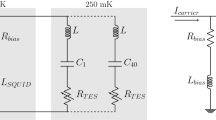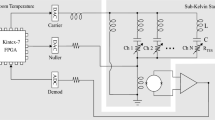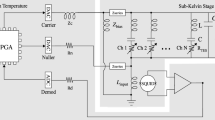Abstract
IRAP is developing the readout electronics of the SPICA-SAFARI’s TES bolometer arrays. Based on the frequency domain multiplexing technique the readout electronics provides the AC-signals to voltage-bias the detectors; it demodulates the data; and it computes a feedback to linearize the detection chain. The feedback is computed with a specific technique, so called baseband feedback (BBFB) which ensures that the loop is stable even with long propagation and processing delays (i.e. several μ s) and with fast signals (i.e. frequency carriers of the order of 5 MHz). To optimize the power consumption we took advantage of the reduced science signal bandwidth to decouple the signal sampling frequency and the data processing rate. This technique allowed a reduction of the power consumption of the circuit by a factor of 10. Beyond the firmware architecture the optimization of the instrument concerns the characterization routines and the definition of the optimal parameters. Indeed, to operate an array TES one has to properly define about 21000 parameters. We defined a set of procedures to automatically characterize these parameters and find out the optimal settings.







Similar content being viewed by others
References
Barret, D., den Herder, J.W., Piro, L., et al.: The hot and energetic universe: The x-ray integral field unit (x-ifu) for athena+. arXiv:1308.6784(2013)
Blachman, N.M.: A generalization of woodward’s theorem on {FM} spectra. Inform. Control. 5 (1), 55–63 (1962)
Bruijn, M., Gottardi, L., den Hartog, R., et al.: Superconducting lc filter circuits for frequency division multiplexed readout of tes detectors. IEEE Trans. Appl. Supercon. 21(3), 294–297 (2011)
Den Hartog, R., Beyer, J., Boersma, D., et al.: Frequency domain multiplexed readout of tes detector arrays with baseband feedback. IEEE Trans. Appl. Supercon. 21(3), 289–293 (2011)
Dobbs, M.A., Lueker, M., Aird, K.A., et al.: Frequency multiplexed superconducting quantum interference device readout of large bolometer arrays for cosmic microwave background measurements. Rev. Sci. Instrum. 83(7), 073, 113 (2012)
Drung, D., Beyer, J., Peters, M., et al.: Novel squid current sensors with high linearity at high frequencies. IEEE Trans. Appl. Supercon. 19(3), 772–777 (2009)
Gerchberg, R.W., Saxton, W.O.: A practical algorithm for the determination of phase from image and diffraction plane pictures. Optik 35, 237 (1972)
Gottardi, L., Akamatsu, H., Bruijn, M., et al.: Weak-link phenomena in ac-biased transition edge sensors. J. Low Temp. Phys., 1–6 (2014)
Irwin, K., Hilton, G.: Transition-edge sensors. In: Enss, C. (ed.) Cryogenic Particle Detection, Topics in Applied Physics, vol. 99, pp. 63–150. Springer Berlin Heidelberg (2005)
Lanting, T.M., Cho, H.M., Clarke, J., et al.: Frequency-domain multiplexed readout of transition-edge sensor arrays with a superconducting quantum interference device. Appl. Phys. Lett. 86(11), 112511 (2005)
Lindeman, M., Hijmering, R., Khosropanah, P., et al.: Carrier phase optimization for frequency division multiplexing of low temperature detectors. J. Low Temp. Phys. 167(5–6), 701–706 (2012)
Nakagawa, T.: Spica: space infrared telescope for cosmology and astrophysics. Adv. Space Res. 34(3), 645–650 (2004). Astronomy at IR/Submm and the Microwave Background
Oral, T., van Loon, D., Hou, R., et al.: A low-power algorithm for baseband feedback used with frequency domain multiplexing. J. Low Temp. Phys. 167, 658–663 (2012)
Van der Ouderaa, E., Schoukens, J., Renneboog, J.: Peak factor minimization of input and output signals of linear systems. IEEE Trans. Instrum. Meas. 37(2), 207–212 (1988)
Schroeder, M.: Synthesis of low-peak-factor signals and binary sequences with low autocorrelation (corresp.) IEEE Trans. Inform. Theory 16(1), 85–89 (1970)
Acknowledgements
This work is supported by CNRS, CNES and Microtec from Agora industries group.
Author information
Authors and Affiliations
Corresponding author
Rights and permissions
About this article
Cite this article
Clenet, A., Ravera, L., Bertrand, B. et al. Architecture and settings optimization procedure of a TES frequency domain multiplexed readout firmware. Exp Astron 38, 65–76 (2014). https://doi.org/10.1007/s10686-014-9407-0
Received:
Accepted:
Published:
Issue Date:
DOI: https://doi.org/10.1007/s10686-014-9407-0




